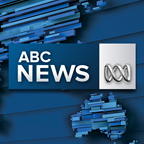
Updated
French fashion companies LVMH and Kering have signed a joint charter vowing to stop hiring size-zero models worldwide in response to continued criticism the industry encourages eating disorders.
Key points:
- The pact bans the conglomerates' labels from using models below an Australian size 6
- The charter requires models to submit a medical report every six months
- Curvy model Abby Valdes says the move is long overdue
The pact adopted by French corporations LVMH and Kering, which own brands like Dior, Gucci and Louis Vuitton, incorporates — and goes beyond — a new French law that requires models to provide medical certificates proving they are healthy before they can work.
While the French law set to take effect on October 1 requires both male and female models to present a health certificate obtained within the previous two years, LVMH and Kering said their charter would shorten the timeframe to six months of the job.
The pact also bans the conglomerates' labels from using female models below a French women's size 34, which is typically equivalent to a US size 0-2 and a UK/Australian size 6.
 Photo:
Size zero models have dominated the fashion industry since the early 1990s. (Reuters: Luke MacGregor)
Photo:
Size zero models have dominated the fashion industry since the early 1990s. (Reuters: Luke MacGregor)
The French law initially included a minimum body mass index (BMI) requirement, but it was removed after lawmakers deemed the doctor's certificate an adequate safeguard.
In addition to fulfilling physical requirements, the charter requires each brand to put a dedicated psychologist at the disposal of fashion models during working eithers — either by phone or in person at the workplace.
The two groups said they introduced the charter with the hopes of setting a new global standard for the fashion industry.
"We hope to inspire the entire industry to follow suit, thus making a real difference in the working conditions of fashion models industry-wide," Kering chief executive Francois-Henry Pinault said in a statement.
'We have needed this'
 Photo:
Model Abby Valdes has worked with brands such as Tommy Hilfiger, Levi's and Macy's. (Facebook: Bella Management)
Photo:
Model Abby Valdes has worked with brands such as Tommy Hilfiger, Levi's and Macy's. (Facebook: Bella Management)
Model Abby Valdes, who wears the average Australian woman's clothing size of 12-16, has applauded the companies for bringing their standards in line with those of the consumer.
"I'm really proud of them for doing this. They need to uphold it," Valdes said.
"I hope that this is the beginning of a long, long, list of others who follow suit. We have needed this."
Valdes is one of Australia's most successful plus-size models, having worked with labels such as Tommy Hilfiger and Marina Rinaldi over the span of her decade-long career.
But she still continues to experience discrimination on a regular basis within the industry.
"I have been living in New York for 10 years and certainly had a stylist or two look me up and down and just say, 'I don't know what to do with you'," she said.
Valdes said it was time the rest of the industry started to shift its mindset to promote a healthier and more realistic message across the board.
"We're real people and women, we want to see ourselves everywhere and these minus sizes and size-zero sizes, I don't know anybody in my real life who looks like that," Valdes said.
"I think when you've got a size that doesn't exist, like size zero, you've got a problem. When you want kids to be in a size that is minus, you've got to take a look at that.
"We've got a voice to express ourselves … it's high time they stopped trying to tell us what we want because we're the consumers.
"It's time we tell them what we want and we are."
Gucci, Bottega Veneta, Yves Saint Laurent, Balenciaga and Stella McCartney are among the major labels to adopt the new casting requirements.
ABC/wires
Topics: fashion, womens-health, health, women, france, australia
First posted









 Add Category
Add Category
